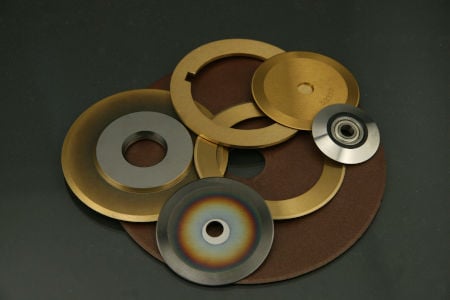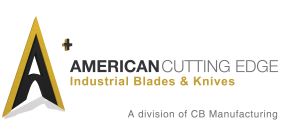You may not realize that there’s more you can do to get better performance from your converting blades. Aside from changing out dull blades, there are some simple things you can do to get longer life, higher quality cuts, and improve overall cutting efficiency. Looking beyond the purchase of the knives your converting machine OEM recommends can improve your productivity and positively impact your bottom line.
Pay Attention to Knife Holder Maintenance
If your knives aren’t performing up to par, it could be the result of irregular knife holder maintenance. When a knife doesn’t fit properly in the holder, inconsistent wear patterns will appear. In addition, it will wear out more quickly, and produce low-quality cuts.
Make sure you’re rebuilding knife holders regularly to maintain the highest quality cuts and increase the lifetime of your blades. At a minimum, each rebuild should include inspection, lubrication and replacement of the standard wear parts. If you are unsure about the condition of your knife holder, a blade supplier should be qualified to evaluate them. The health of your knife holder can be determined using pictures, videos, and even plant visits to ensure the maximum life of your converting blade.
Consider Coatings to Current Blade
The addition of a coating to your current blade is a simple way of improving lifetime and production efficiency. With so many choices, how do you determine which coating is the best one for your application? Making the decision about a coating starts with understanding the cutting application. An experienced and reputable blade manufacturers can evaluate your converting application and recommend knife coatings that will increase performance and reduce wear.
Coatings can be applied to the entire blade surface or just to the cutting edge. When the converting knife only penetrates part of the material, the coating may only need be applied to the cutting edge. Coatings can also be applied to specific areas of the knife to relieve adhesion, abrasion, and wear issues that do not affect the entire knife surface.
Types of Coatings
Physical Vapor Deposition (PVD) coating increases resistance to wear and corrosion. The coating material is vaporized, at a high temperature or in a vacuum chamber during the coating process. The vaporized coating material is combined with a reactive gas and deposited onto the blade through the process of condensation.
at a high temperature or in a vacuum chamber during the coating process. The vaporized coating material is combined with a reactive gas and deposited onto the blade through the process of condensation.
The result is a hard, thin, chemically inert coating. PVD coatings are ideal for decreasing both abrasion and adhesion issues. Boron Carbide, titanium carbide, and titanium nitride are commonly applied to converting knives using a PVD process.
Chemical Vapor Deposition (CVD) coating increases lifetime and production efficiency. In the CVD coating process, blades are placed in a chamber and heated to a precise temperature to avoid material warping. A gas is pumped into the chamber where a reaction with the blade material occurs. As a result, a thin layer of coating material is created. The coating process changes the chemical properties of the blade and results in a highly wear resistant coating with excellent adhesion properties. Titanium carbide is a hard ceramic material that is commonly applied using a CVD process to improve production and wear.
Upgrade Your Blade Material
Dramatic increases in converting machine efficiency can be achieved simply by adjusting the blade material you’re using. If your operation is affected by low runtimes, short blade lifetime, or obvious machine inefficiencies, making the switch to a new blade material might be just what you need.
Carbon steel converting knives can result in lower runtimes and short lifetimes. Often, a change to a new blade material, without changing the blade style, can increase lifetime, runtime, and production efficiency by days or months ultimately improving profitability in addition to efficiency.
Razor slitting applications often use converting knives manufactured from carbon and stainless steel. Carbon and stainless steel can display some of the lowest production efficiencies and lifetime. The same blade style in Tungsten Carbide or Zirconia Ceramic can significantly increase knife performance.
52100 and D2, commonly used in sheer slitting operations, are the most common, low-cost knife materials. Converters can often improve lifetime, runtime, and production efficiency, with an upgrade to CPM10V or carbide inlaid bottom knives. This improvement can have a positive and direct impact on non-woven material converting.
In order to properly optimize your converting knifes and cuts, you must assess all aspects of your converting operation, including cutting material, cutting volume, budget, and machinery. Work with a knowledgeable, experienced converting knife supplier like ACE that is qualified to recommend an ideal combination of solutions to meet your converting needs.
Contact ACE today to learn more about how you can optimize your cutting application today.




